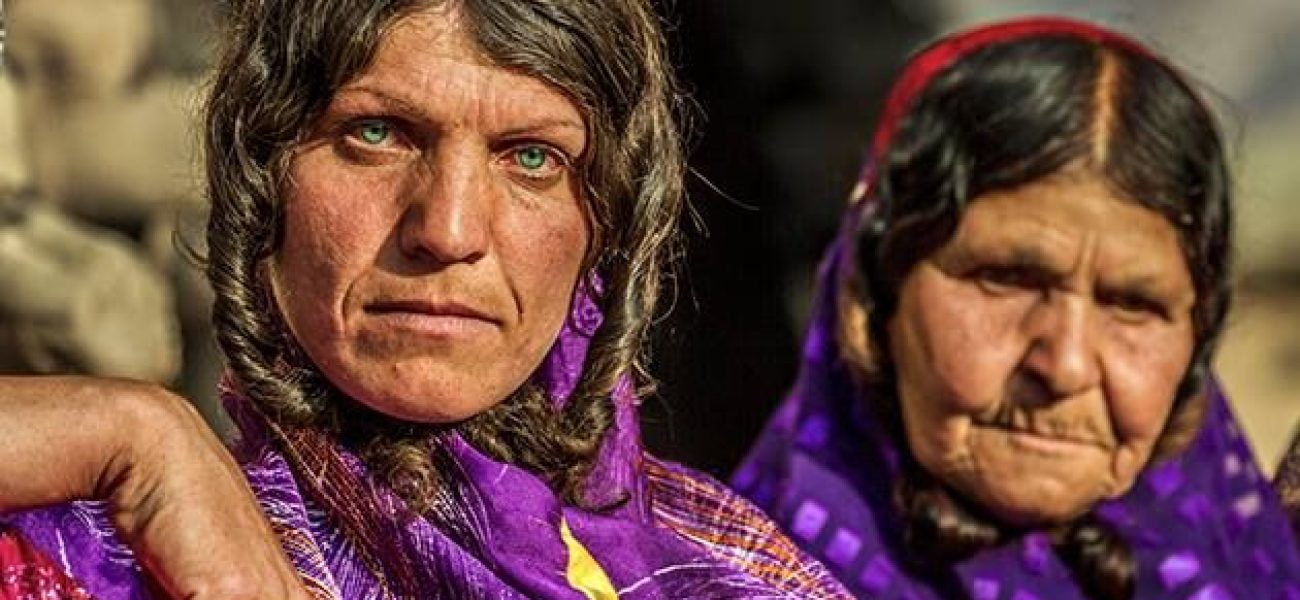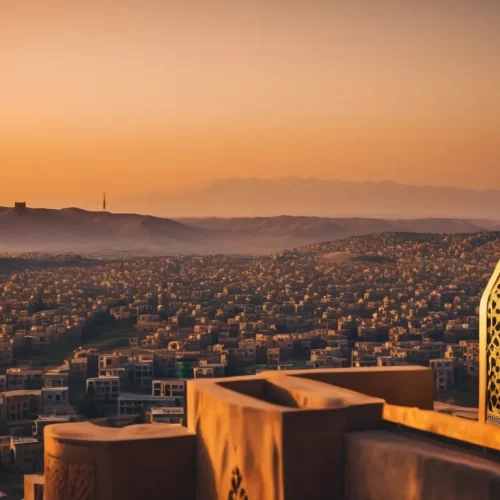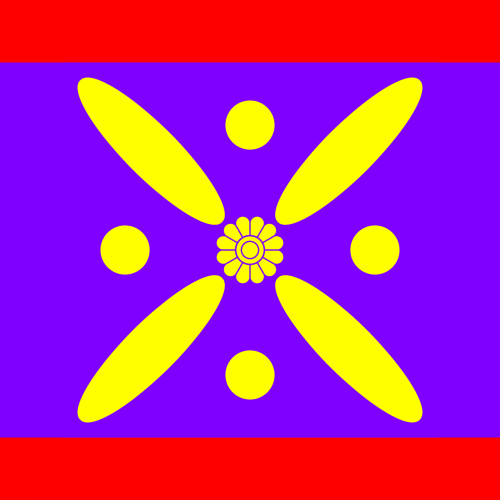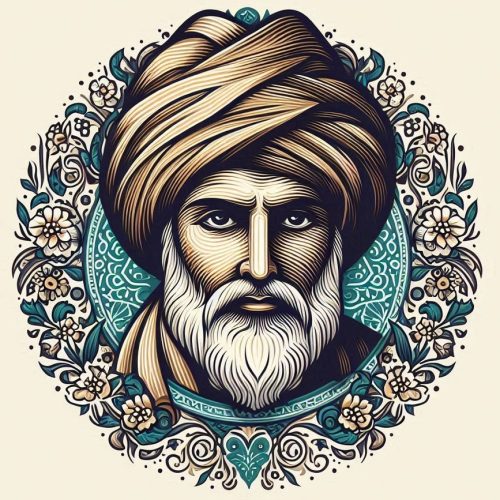In the rugged and mountainous terrain of Iran, amidst the stark beauty of the landscape, two nomadic tribes have thrived for centuries, preserving their rich cultural heritage and traditional way of life. The Qashqai and Bakhtiari tribes, known for their resilience, resourcefulness, and strong sense of community, offer a fascinating glimpse into the world of nomadic culture in Iran.
Introduction to Nomadic Life
Nomadic life has been an integral part of Iranian culture for millennia, with nomadic tribes like the Qashqai and Bakhtiari adapting to the harsh and diverse landscapes of Iran’s mountainous regions. These tribes have developed a way of life that is intricately connected to the natural rhythms of the land, relying on mobility and resourcefulness to sustain themselves and their communities.
For the Qashqai and Bakhtiari, migration is not just a necessity but a deeply ingrained tradition passed down through generations. The migration patterns of these tribes are dictated by the changing seasons, as they move their herds of livestock to higher or lower elevations in search of grazing land, water sources, and suitable shelter.
In the spring and summer months, when the snow melts and the mountain pastures become lush and green, the Qashqai and Bakhtiari tribes ascend to higher altitudes in the Zagros and Alborz mountain ranges. Here, they establish temporary encampments known as “ashayer” or “il,” where they can graze their animals on fresh grass and take advantage of the abundant water sources provided by melting snow and mountain streams.
During the autumn and winter months, as temperatures drop and snow begins to fall, the tribes descend to lower elevations, seeking shelter in valleys and plains where the climate is milder and food and water are more readily available. This seasonal migration is a carefully orchestrated process, requiring coordination and cooperation among tribe members to ensure the safety and well-being of their livestock and families.
The daily life of nomadic tribes revolves around the care of their animals, which provide them with food, clothing, and livelihood. Men and women work together to tend to the herds, moving them from one grazing area to another and taking turns watching over them day and night. This nomadic lifestyle requires a deep understanding of the land and its resources, as well as a keen awareness of the changing seasons and weather patterns.
Despite the challenges of life in the mountains, the Qashqai and Bakhtiari tribes have developed a strong sense of community and solidarity, relying on one another for support and mutual aid. Extended families often travel together, sharing resources and responsibilities, and helping each other overcome obstacles along the way.
Overall, nomadic life is a way of life that is deeply rooted in the cultural heritage and traditions of the Qashqai and Bakhtiari tribes. It is a lifestyle characterized by resilience, adaptability, and a deep connection to the natural world, embodying the timeless rhythms of migration, survival, and renewal that have sustained these tribes for centuries.
Migration Patterns and Daily Life

The nomadic lifestyle of the Qashqai and Bakhtiari tribes is shaped by their seasonal migration patterns, which are intricately tied to the availability of resources such as water, pastureland, and shelter. These migration patterns are not arbitrary but have been honed over generations, passed down through oral tradition and practical experience.
In the spring, as the harsh grip of winter loosens its hold on the land, the Qashqai and Bakhtiari tribes begin their ascent from the lowlands to the high mountain pastures. This journey, known as “kooch,” is a communal endeavor, with entire families and their herds making the arduous trek together. It’s a spectacle of movement and color as the tribes’ tents, livestock, and belongings wind their way up the mountain slopes.
As they reach higher elevations, the tribes establish temporary encampments known as “yailaks” or “il sardar,” where they will spend the summer months. These encampments are strategically located near water sources and lush grazing lands, ensuring that the tribes’ animals have access to the nutrients they need to thrive. Here, the tribes will live in close proximity to one another, forming tight-knit communities that work together to tend to their herds, gather food, and maintain their traditional way of life.
The summer months are a time of abundance and activity for the Qashqai and Bakhtiari tribes. Men and women alike are engaged in a flurry of tasks, from milking and shearing sheep to spinning wool, weaving carpets, and repairing tents. Children are taught the skills and traditions of their ancestors, learning how to tend to animals, gather wild herbs, and navigate the rugged terrain of the mountains.
As autumn approaches and temperatures begin to drop, the tribes prepare for their descent back to the lowlands. This journey, known as “bahar,” is just as challenging as the ascent, as the tribes navigate steep mountain passes and treacherous terrain. Yet, with their collective knowledge and experience, they make the journey safely, arriving in the valleys and plains just in time to escape the harsh winter weather.
Life in the lowlands is quieter and more settled than in the high mountains, as the tribes establish more permanent encampments known as “qishlaqs” or “il jadid.” Here, they will spend the winter months, sheltered from the cold and snow that blankets the higher elevations. It’s a time for rest and reflection, as the tribes gather around the warmth of the fire, sharing stories, songs, and traditional foods that sustain them through the long winter nights.
In this way, the daily life of the Qashqai and Bakhtiari tribes is intricately intertwined with the rhythm of the seasons, as they move with the changing landscape in search of sustenance, security, and community. It’s a way of life that demands resilience, adaptability, and a deep connection to the land, yet one that offers a profound sense of belonging and purpose to those who embrace it.
Arts and Handicrafts
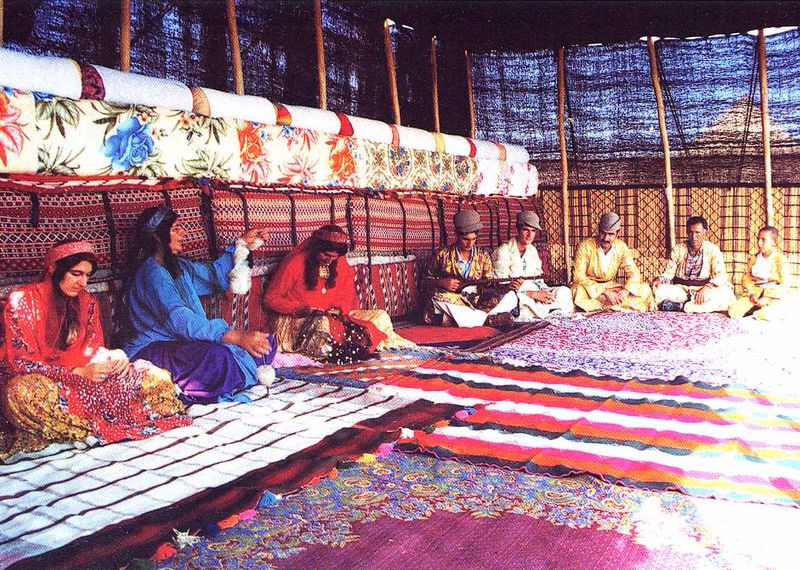
The Qashqai and Bakhtiari tribes are not only known for their nomadic lifestyle and migration patterns but also for their remarkable artistic talents and craftsmanship. Despite the challenges of life in the rugged mountainous terrain, members of these tribes have developed a rich tradition of creating exquisite arts and handicrafts that reflect their cultural heritage and deep connection to the natural world.
One of the most renowned artistic expressions of the Qashqai and Bakhtiari tribes is their mastery of carpet weaving. Carpet weaving has been a central part of their cultural identity for centuries, with each tribe producing distinctive designs and patterns that reflect their unique history and traditions. The carpets woven by these tribes are highly prized for their intricate motifs, vibrant colors, and exceptional craftsmanship.
The process of carpet weaving is a labor-intensive and time-consuming endeavor that requires skill, patience, and attention to detail. It begins with the careful selection and preparation of wool from the tribes’ own sheep, which is then spun into yarn using traditional techniques passed down through generations. The yarn is dyed using natural dyes sourced from plants, roots, and minerals found in the surrounding landscape, giving the carpets their rich and vibrant colors.
Once the yarn is dyed, it is meticulously woven into intricate patterns and designs on a loom, a process that can take weeks, months, or even years to complete depending on the size and complexity of the carpet. Each knot is tied by hand, with weavers drawing on traditional motifs and symbols inspired by nature, mythology, and everyday life in their designs.
In addition to carpet weaving, the Qashqai and Bakhtiari tribes are skilled in other forms of textile production, including kilims, rugs, and felted fabrics. These textiles are often adorned with embroidery, tassels, and other decorative elements, adding to their beauty and cultural significance. Women, in particular, play a central role in textile production, with weaving and embroidery being passed down from mother to daughter as part of their cultural heritage.
Apart from textiles, the Qashqai and Bakhtiari tribes are also known for their metalwork, pottery, and woodcarving. Metalworkers create intricate jewelry, ornaments, and utensils using techniques such as casting, forging, and engraving. Pottery makers craft functional and decorative vessels using clay sourced from the local landscape, while woodcarvers carve intricate designs and patterns into furniture, doors, and other wooden objects.
Overall, the arts and handicrafts of the Qashqai and Bakhtiari tribes are a testament to their creativity, ingenuity, and cultural resilience. Through their exquisite craftsmanship and timeless designs, these tribes continue to preserve and celebrate their rich cultural heritage, ensuring that their traditions will endure for generations to come.
Traditions and Culture

The Qashqai and Bakhtiari tribes possess a rich tapestry of traditions and cultural practices that have been passed down through generations, shaping their way of life and fostering a strong sense of identity and community.
Language and Dialects
Language serves as a cornerstone of cultural identity for the Qashqai and Bakhtiari tribes. While both tribes primarily speak Persian (Farsi), they also maintain their own distinct dialects that reflect their unique histories and interactions with neighboring tribes and communities. These dialects, characterized by their unique vocabulary, pronunciation, and grammar, serve as a marker of tribal identity and solidarity, helping to reinforce bonds within the community.
Religious Beliefs
Religion plays a significant role in the lives of the Qashqai and Bakhtiari tribes, with the majority adhering to Islam, particularly Sunni Islam. Religious rituals and practices are woven into the fabric of daily life, providing spiritual guidance and moral support to individuals and communities alike. Mosques and religious centers serve as focal points for worship and community gatherings, where members of the tribe come together to pray, reflect, and celebrate important religious holidays and milestones.
Cultural Celebrations and Festivals
The Qashqai and Bakhtiari tribes celebrate a variety of cultural festivals and events throughout the year, each one serving as an opportunity for community members to come together, strengthen bonds, and celebrate their shared heritage. These festivals often feature music, dance, food, and traditional rituals that highlight the tribes’ cultural traditions and values. One such example is the annual “Ghashgha’i Nomad Festival,” which showcases the tribes’ nomadic lifestyle, arts, crafts, and cultural practices.
Traditional Dress
Traditional dress is an important aspect of cultural identity for the Qashqai and Bakhtiari tribes, with men and women alike taking pride in their distinctive attire. Men typically wear loose-fitting trousers, tunics, and vests made from wool or other natural fibers, often adorned with intricate embroidery or woven patterns. Women’s clothing is more colorful and elaborate, with dresses featuring vibrant patterns, embroidery, and decorative elements such as sequins, beads, and mirrors. Headscarves, shawls, and jewelry are also commonly worn, adding to the overall elegance and beauty of traditional dress.
Music, Dance, and Oral Traditions

Music, dance, and oral traditions are integral parts of Qashqai and Bakhtiari culture, serving as vehicles for storytelling, cultural expression, and community bonding. Music is often accompanied by traditional instruments such as the tambourine, drum, flute, and stringed instruments like the “saz” or “tar.” Dance forms such as the “lur” and “chalpari” are performed during festivals and celebrations, with intricate footwork and movements that reflect the tribes’ connection to the land and nature. Oral traditions, including epic poems, folk tales, and myths, are passed down through generations, preserving the tribes’ history, values, and cultural heritage for future generations to enjoy and cherish.
The traditions and culture of the Qashqai and Bakhtiari tribes are a testament to their resilience, creativity, and deep connection to the land. Through their language, religious beliefs, cultural celebrations, traditional dress, and artistic expressions, these tribes continue to uphold their rich cultural heritage and pass it on to future generations, ensuring that their traditions will endure for years to come.
The Qashqai and Bakhtiari tribes represent not only a way of life but also a rich tapestry of cultural traditions, artistic expressions, and community values that have endured for centuries in the rugged landscapes of Iran. Through their nomadic lifestyle, the tribes have developed a deep connection to the land, relying on its resources and rhythms to sustain their livelihoods and shape their identity.
Their migration patterns, daily rituals, and communal bonds reflect a profound understanding of their environment and a resilience that has allowed them to thrive in some of the harshest conditions. The Qashqai and Bakhtiari tribes have adapted to the challenges of their surroundings, using their ingenuity and resourcefulness to create beautiful arts and handicrafts, preserve their language and cultural heritage, and maintain a strong sense of community cohesion.
Moreover, their traditions and cultural practices serve as a bridge between the past and the present, connecting generations of tribe members and providing a sense of continuity and belonging in an ever-changing world. Through their religious beliefs, cultural celebrations, and oral traditions, the Qashqai and Bakhtiari tribes continue to pass down their values, wisdom, and stories to future generations, ensuring that their legacy will endure for years to come.
In essence, the Qashqai and Bakhtiari tribes embody the spirit of resilience, adaptability, and cultural richness that defines the nomadic way of life. Their traditions and culture are not only a source of pride for tribe members but also a testament to the enduring strength of human ingenuity and community solidarity in the face of adversity. As they continue to navigate the challenges of the modern world while preserving their unique way of life, the Qashqai and Bakhtiari tribes stand as a living testament to the enduring power of cultural heritage and tradition.

